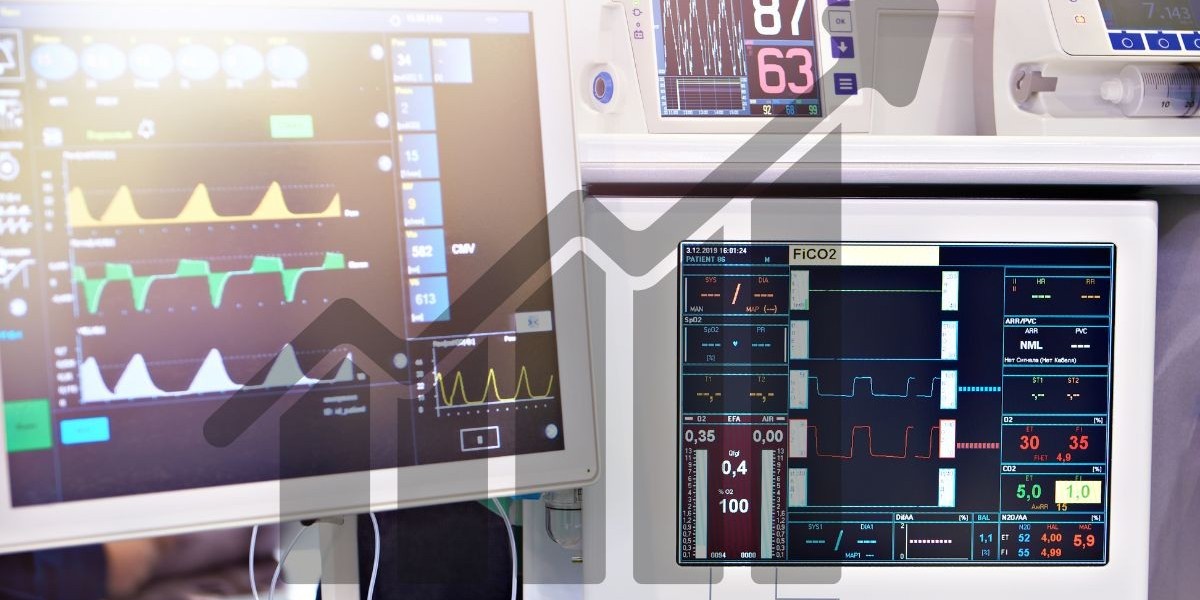In recent years, the field of medical devices has witnessed remarkable advancements, revolutionizing the way healthcare is delivered and transforming patient outcomes. From cutting-edge wearable technology to innovative surgical instruments, medical devices play a pivotal role in diagnosing, treating, and managing various medical conditions. The market for medical devices has experienced substantial growth, with significant projections indicating a promising future trajectory.
Market Overview:
In 2023, the global market for medical devices reached an approximate value of USD 597.48 billion. Projections suggest that the market will continue to grow at a compound annual growth rate (CAGR) of 6.2% between 2024 and 2032, reaching a value of USD 1,026.70 billion by 2032. This growth underscores the increasing demand for advanced medical technologies and the expanding role of medical devices in healthcare delivery worldwide.
Key Trends and Developments:
Telemedicine and Remote Monitoring Devices: The rise of telemedicine and remote healthcare has led to the development of innovative devices that enable virtual consultations, remote patient monitoring, and telehealth services. Wearable sensors, connected medical devices, and home monitoring kits empower patients to actively manage their health and engage with healthcare providers from anywhere, enhancing access to quality care and improving patient outcomes.
Smart Wearable Health Devices: Wearable health technology has become increasingly sophisticated, with devices ranging from fitness trackers to medical-grade wearables capable of monitoring vital signs and detecting abnormalities. These devices leverage sensors, algorithms, and wireless connectivity to track metrics such as heart rate, blood pressure, and sleep patterns, empowering individuals to take control of their health and well-being.
Minimally Invasive Surgical Instruments: Advances in surgical techniques have spurred the development of minimally invasive surgical devices that offer less invasive alternatives to traditional procedures. Robotic surgical systems, laparoscopic instruments, and advanced imaging technologies enable surgeons to perform complex surgeries with greater precision, minimal scarring, and faster recovery times, enhancing patient safety and surgical outcomes.
Implantable Medical Devices: Implantable medical devices play a crucial role in diagnosing and treating various medical conditions, from cardiac disorders to neurological disorders. Innovations in this field include pacemakers, defibrillators, neurostimulation devices, and drug-delivery implants, providing targeted therapies and improving patient quality of life.
3D Printing in Medical Device Manufacturing: 3D printing technology has revolutionized the design and production of custom medical devices, prosthetics, and implants. Additive manufacturing techniques allow for the rapid prototyping and customization of devices tailored to individual patient anatomy, leading to improved clinical outcomes, reduced costs, and enhanced patient satisfaction.
Point-of-Care Diagnostic Devices: Point-of-care diagnostic devices enable rapid and accurate diagnosis of medical conditions at the patient's bedside or in outpatient settings. Handheld analyzers, portable ultrasound systems, and rapid diagnostic tests empower healthcare professionals to make timely treatment decisions, improving patient care and disease management.
Remote Monitoring and Home Healthcare Devices: The COVID-19 pandemic has accelerated the adoption of remote monitoring and home healthcare devices, enabling patients to receive medical care and monitoring from the comfort of their homes. Remote patient monitoring systems, smart home health devices, and telehealth platforms facilitate virtual consultations, remote vital sign monitoring, and medication management, enhancing healthcare accessibility and convenience.
Innovations in Medical Devices: A Look Into Tomorrow's Healthcare Landscape
As we delve deeper into the realm of medical technology, it becomes evident that the future of healthcare is intertwined with groundbreaking advancements in medical devices. These devices are not just tools; they represent a paradigm shift in how healthcare is delivered, monitored, and personalized. Building upon the foundation of previous achievements, the landscape of medical devices continues to evolve, driven by technological innovation, patient-centric design, and the pursuit of better health outcomes.
Enhanced Connectivity and Interoperability:
One of the most significant trends shaping the future of medical devices is enhanced connectivity and interoperability. Devices are becoming increasingly interconnected, allowing for seamless data exchange and integration into broader healthcare ecosystems. This connectivity facilitates remote monitoring, data analytics, and real-time decision-making, empowering healthcare providers to deliver more personalized and efficient care.
Artificial Intelligence and Machine Learning Integration:
Artificial intelligence (AI) and machine learning (ML) are revolutionizing medical device technology, enabling devices to analyze vast amounts of data, recognize patterns, and make intelligent predictions. AI-powered medical devices can assist clinicians in diagnosing diseases, predicting treatment responses, and optimizing patient outcomes. From diagnostic imaging systems to wearable health monitors, AI-driven algorithms are enhancing the capabilities of medical devices and unlocking new possibilities in precision medicine.
Bioelectronic Medicine and Neurostimulation:
Bioelectronic medicine, a cutting-edge field that combines principles of neuroscience and electrical engineering, holds immense promise for treating a wide range of medical conditions. Neurostimulation devices, such as implantable electrodes and neuromodulation systems, can modulate neural circuits to alleviate chronic pain, manage neurological disorders, and restore organ function. These devices represent a paradigm shift in the treatment of conditions that were previously considered untreatable or refractory to traditional therapies.
Nanotechnology and Microscale Devices:
Advancements in nanotechnology and microscale devices are paving the way for highly targeted and minimally invasive interventions. Nanomedicine, which involves the use of nanoscale materials for diagnostic and therapeutic purposes, holds potential for precise drug delivery, imaging, and tissue engineering. Microscale devices, including microfluidic chips and implantable sensors, offer unprecedented capabilities for monitoring biological processes, detecting biomarkers, and delivering therapeutic agents with unparalleled precision.
Personalized and Regenerative Medicine Technologies:
The advent of personalized medicine is driving the development of medical devices tailored to individual patient characteristics and genetic profiles. Biomarker-based diagnostic tests, genetic sequencing platforms, and patient-specific implants are revolutionizing disease diagnosis, treatment selection, and prognosis prediction. Additionally, regenerative medicine technologies, such as tissue engineering scaffolds and organ-on-a-chip systems, hold promise for repairing damaged tissues and organs, offering new avenues for regenerating and restoring biological function.
Global Health and Accessible Technologies:
In parallel with technological advancements, there is a growing emphasis on developing medical devices that are accessible, affordable, and suitable for global health applications. Innovations such as low-cost diagnostic tools, portable medical imaging devices, and point-of-care testing kits are addressing healthcare disparities and improving access to essential medical services in underserved communities worldwide. Moreover, collaborative initiatives between public and private sectors are driving innovation and expanding the reach of medical devices to those in need.








